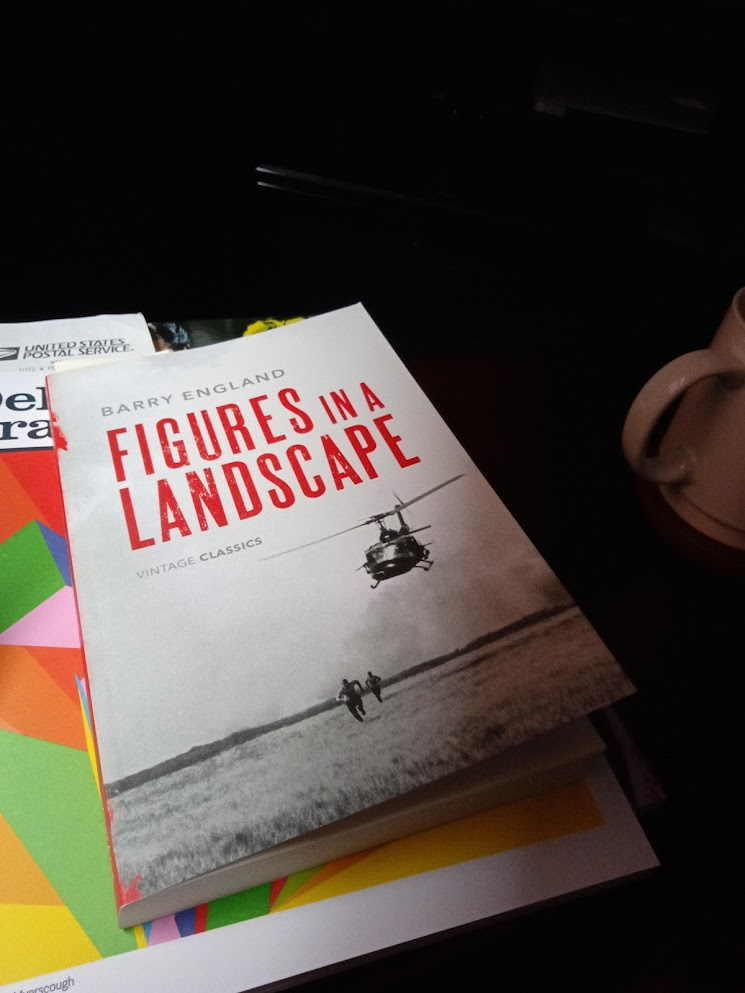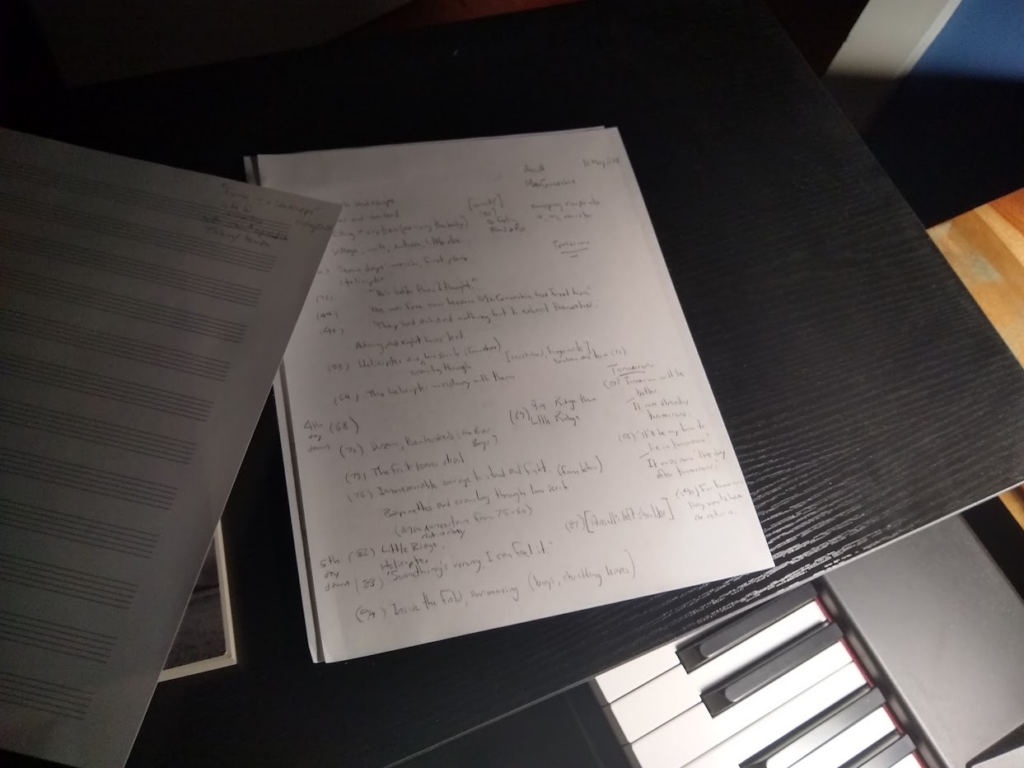I finished the book by Barry England, Figures in a Landscape, maybe a year ago and it tore me apart.
It, and it’s ideas, came back to me recently for no particular reason, but the story immediately felt like a primal source of expression for something current in me. As inspiration, you look for the internal emotions–those that are the wordless–that you hope to express to others so that They Can See the Importance of those subjective ideations. More to the point: I look for those aspects of what’s in me to be important out of me… but I think it’s uncontroversial that this concept is universal w/r/t artists in general.
That’s a sloppy way of pointing out that: you say what you want to, and have to, say, and hope others enjoy it.

I was happy for the convenient alignment of finishing the last piece as I started looking for work again. It would have been an uncertain influence to have an important time period of my life (composing) overlap with a life-changing event (starting work at a new company (hopefully soon)). The clean segregation of focus felt necessary.
But… as soon as I was done with the string quartet I had that shifty why-am-I-not-composing feeling. As frustrating as composing is, emotionally, its absence is more fraught, psychologically. From what I’d read of others’ confessions on the internets, this is a common affliction.

England’s book was an existentialist response to a feeling at a point in time in 1968 about war and the value we put on life, ours and others, and how proximity affects that value. What he wrote transcends the specificity of the events contained. I think of it, imprecisely, as a more “human” companion to Waiting for Godot.
The composition:
The book is episodic (though it flows seamlessly from beginning to end), switching between the two characters’ viewpoints. With each handoff the narrative quite expressively exposes their shifting impressions and their growth from reluctant partners of necessity to friends. The episodic aspect of the book maps nicely onto many short movements. I did a cursory re-read of the book, and to get my hands around the different scenes I’ve mapped out the major events, how they relate to each other, and on what day they occur (some spare, others not). I then condensed the detailed map into a more course-grained 13 movements.
There’s a movie with Robert Shaw and Malcom McDowell that came out in 1970. I actually got a copy of it manymany years ago from a mail order site that sold rare and cult films (another I purchased was The Killing of Satan, an hilariously bad movie from the Philippines that came out in 1983). I watched Figures back in 2007 but honestly don’t remember it now. It’s on YouTube and streaming on Amazon but the YouTube print looks pretty crappy so I’ve queued up the Amazon stream.
Initial structure:
- March
- Village I
- Helicopter I
- Crawling I
- Fire
- Boat
- Mountain I
- Village II
- Mountain II
- Rain
- Fissure
- Crawling II
- Helicopter II